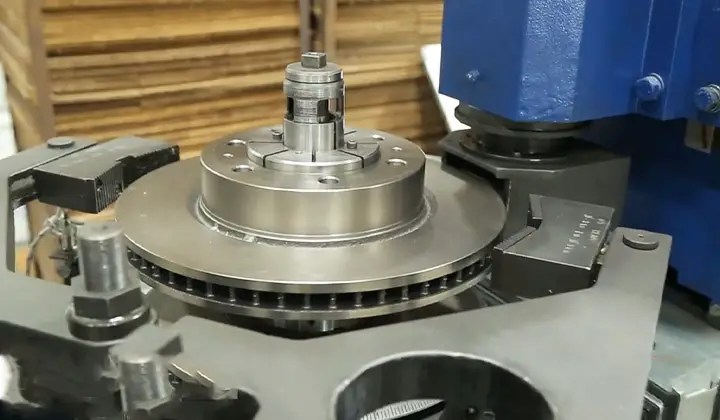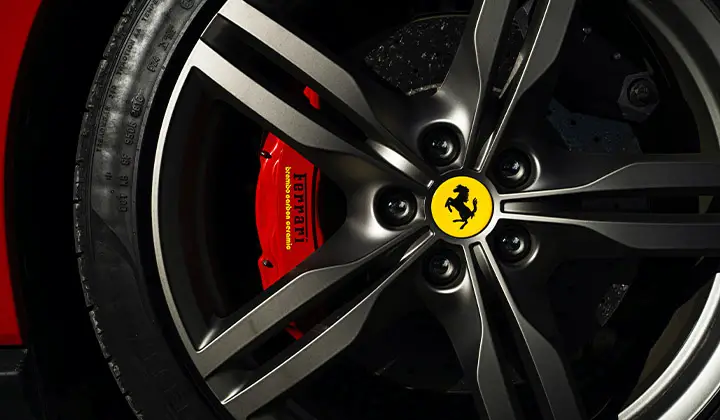A variety of metals can be used to make car rotor blades, but aluminum is generally the most common choice due to its lightweight properties and durability.
Rotor blades are made of a number of materials, including metal and plastic. The material that the rotor is made from affects how quickly it can stop a car. Different types of rotors are better for different types of cars.
Carrot-shaped rotors work best on smaller cars because they have more stopping power than other types of rotors. Round or disk-shaped rotors are used on larger cars because they generate more heat and can therefore stop faster in cold weather conditions.
When braking, the friction caused by the spinning rotor causes heat to build up inside the rotor. This heat can cause the steel to bend or even shatter. To avoid this problem, car manufacturers often install a layer of metal on top of the actual rotor.
Contents
What Are Car Rotors Made Of
A car’s rotor is made of metal and it helps the car move. It’s attached to the hub by a shaft, which rotates when you drive. When your brakes are applied, they cause friction between the rotor and disk (a piece of brake pad) so that the car can stop.
Car rotors are made of several different materials, all of which have their own benefits and drawbacks. The most common types are metal, plastic, and cast iron.

Metal rotors are the heaviest and offer the best braking performance, but they can also become rusty over time.
Plastic rotors are lighter than metal ones but may not last as long because they can easily become warped or cracked. Cast iron rotors don’t weigh much but tend to be less effective than other types due to their low friction properties.
Car rotors are made from a variety of materials, but the most common is steel. The shape and size of the rotor determine how quickly it can stop a car.
Cast Iron
Cast iron is the most popular type of rotor for cars, mainly because it’s cheap to produce and it offers good wear resistance.
However, cast iron rotors are also very heavy and can cause serious problems when they’re subjected to high speeds or sudden stops.
Steel
Steel rotors are a middle ground between cast iron and aluminum rotors. They offer better performance than both types of rotors but tend to be more expensive than either option. Additionally, steel rotors can rust if they’re not properly treated or stored.
Layered Steel
The layered steel is a newer type of rotor that uses multiple layers of metal to create a stronger and more durable rotor design.
The downside is that layered steel rotors require additional machining steps which can increase the cost of the finished product somewhat.
Aluminum
Aluminum has become increasingly popular as an alternative to traditional steel carrot Rotor blades because they are lighter weight yet still offer good wear resistance.
Additionally, aluminum alloy Rotor blades have a higher tensile strength than standard steel blades meaning they can withstand greater forces before breaking.
High Carbon
Car rotors are typically made of high-carbon materials like stainless steel or aluminum. These materials have the ability to resist wear and tear, which is why they’re often chosen for car rotor replacements.
Ceramic
Rotors can also be made from ceramic materials, which are much harder than metal and therefore less likely to break down over time. This makes them a good option if you want a long-term solution for your car rotor replacement needs.
Most Rotors Are Made of Cast Iron
Cast iron is the most common material used to make rotors. It has a high heat capacity and good anti-wear properties, which makes it a popular choice for car parts that need to withstand high temperatures.
How To Choose the Right Type of Rotors for Your Car
There are a few things to keep in mind when choosing the right type of car rotor.
You’ll want to make sure that the rotor size is appropriate for your vehicle, and that it has been designed specifically for use with your car. Additionally, you’ll need to consider the material used in the rotor itself, as well as how often it will be replaced.

There are a number of factors to consider when choosing the right type of car rotor for your vehicle. Some key considerations include the size and weight of the rotor, as well as its rotational speed and torque.
Handle Different Loads and Speeds
Different types of car rotors can be designed to handle different loads and speeds, which is why it’s important to choose one that matches your specific needs.
For example, racing drivers may need heavier rotors that can withstand higher loads and speeds.
Compatibility With Your Vehicle’s Braking System
It’s also important to make sure that the rotor you choose is compatible with your vehicle’s braking system – if it isn’t, you might experience brake failure or decreased performance due to warped discs or seized calipers.
size and weight
The size of your car rotor affects its performance in different ways.
Rotors that are too small will not be able to stop as much speed and may cause more damage when hit by debris or other objects while driving; meanwhile, large rotors will slow down the vehicle more easily but may also increase the risk of wheel spin during acceleration or braking maneuvers.
When you are shopping for car rotors, it is important to consider the size and weight of your vehicle. Car rotor sizes vary from small cars to large trucks and SUVs, so make sure that you choose the right size for your vehicle.
Finally, always remember to safety test any new rotor before installation by driving slowly around a curve in low gear so you can check for any rattles or vibrations from the wheel bearings
Ceramic Composite Material
Some rotors are now made with ceramic composite materials, which offer better performance than traditional cast iron rotors in terms of strength and energy absorption. They also have an anti-warp property, making them less likely to become warped over time.
Anti-wear Properties
Rotor wear can be caused by various factors such as metal on metal contact or excessive speed fluctuations when braking.
To reduce this kind of damage, some manufacturers have developed special compounds that help protect against wear and tear while braking.
Absorb Heat Well
One key advantage of using a ceramic rotor is that it absorbs heat well-meaning you won’t have to waste energy cooling down your brakes after use. This helps avoid the dreaded “brake fade” effect where your brake pedal feels spongy and weak under pressure.
Rotors May Be Ruined
If the rotors are ruined, it will cause your car to have a lot of problems. The rotors work together with the brake pads to stop your car from moving.
If they are damaged, this process may not be able to happen properly and your brakes may not work as well as they should. This can lead to an increase in speed and a decrease in braking ability.
Braking performance
When the rotors are damaged, their ability to stop the car is reduced significantly which can result in poor braking performance overall. This means that you might have trouble stopping on a wet road or when you need to make a quick turn.
If your brakes aren’t working very well, you’re going to have a much harder time avoiding accidents while driving – especially if you don’t know how to use them properly.
In some cases, this could even mean that you end up crashing into somebody else because you couldn’t avoid them in time.
If rotor damage is severe enough, it may necessitate replacing both the front and rear rotors on most cars – at least one of which will likely be warped or cracked due to wear and tear over time.
Material
The most common types of rotor materials are metal or ceramic. Metal rotors tend to be stronger and last longer than ceramic rotors, but they also tend to generate more heat which can damage your brake pads over time.
Ceramic rotors offer some advantages over metal ones, including being lighter and having a longer lifespan without needing replacement.
FAQs
Are Car Rotors Cast Iron?
Car rotors are almost always cast iron, while they are usually made of steel or aluminum.
Can You Weld Brake Rotors?
This section will discuss the answer to the question, “Can You Weld Brake Rotors?”
The answer is no. Theoretically, you could weld brake rotors but in practice, it’s not very effective.
Are There Rotors That Don’t Rust?
It is a common misconception that all rotors rust. In reality, only some parts of the rotor rust while others don’t. The key to avoiding this issue is to make sure that the entire rotor is made of stainless steel.
What Steel Are Brake Discs?
Brake discs are made of a metal alloy that is known as steel. It is usually a mixture of iron, carbon, and other metals.
What Are Ferrari Rotors Made Of?
Ferrari rotors are made of a carbon-fiber composite material with a graphite-based epoxy resin where general rotors are made of cast iron.
How Do I Know if My Brakes Are Carbon Ceramic?
Carbon-ceramic brakes have enhanced braking performance, with less heat build-up, reduced brake fade, and improved pedal feel.
Conclusion
The composition of a car rotor can vary depending on the manufacturer. There are many different types and materials used to make car rotors, including steel, aluminum, plastic, and composites.
Rotor weight is also an important factor when choosing a rotor for your vehicle because it affects how quickly it can stop the vehicle in an emergency situation.
Other factors to consider include blade size, shape, and design features such as slots or grooves that improve braking performance.
When purchasing a new rotor for your car or truck, be sure to read the product description carefully so you know what features are included and what services the rotor should provide if needed in an emergency situation.
